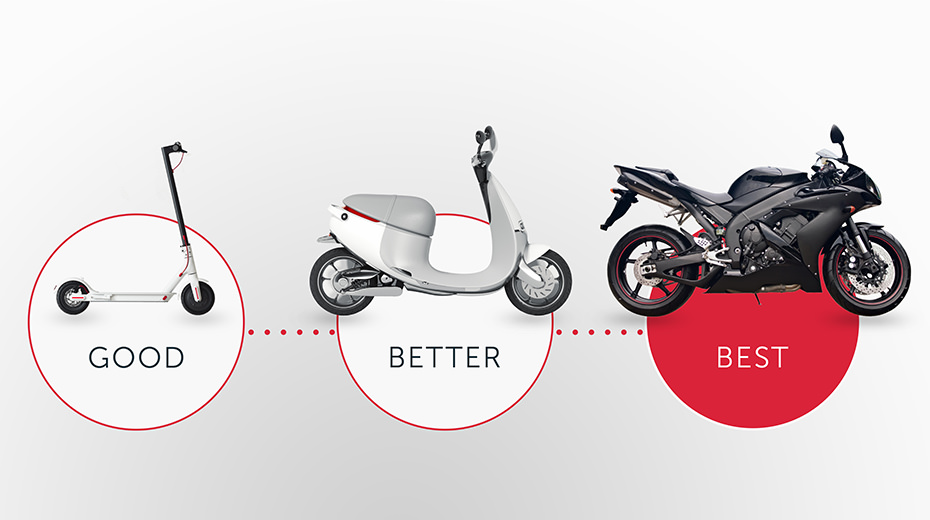For Better B2B Buyer Personas, Focus on People

Share this story
Whether you’ve worked in B2B marketing for 20 days or 20 years, you’ve probably found some value in a B2B buyer persona. After all, it gives your marketing team all the information you need about David Datascientist or Emily Executive in one convenient little package. Who could ask for anything more?
Well, we all should. While the data in your typical buyer persona gives you a lot of information, we need to remember what we’re actually trying to understand about the people behind the persona. We need clarity about our customers and how to talk to them, not random details about them. When we recognize this, we can make our personas more valuable.
First things first: What is a good buyer persona for B2B?
A good persona paints a comprehensive portrait of a buyer’s decision-making process. Marketers need a deep understanding of our target audience’s needs, motivations, behaviors, pain points, and media preferences. A marketing persona should help us understand who they our ideal potential customers really are, what makes them tick and where we can find them in different situations in order to market to them more effectively:
When current options fail…
When a company is looking for a new option…
When a company starts using a new product or service…
…Who’s making the decisions?
…What do decision-makers do?
…What do they think and feel?
…Where do ideal customers turn to learn more?
…When are they likely to purchase or be in market for your product or service?
Looking at B2B personas through this lens helps avoid stereotypes and will lead to a better buyer persona for your company. It’s less about creating personas for a buyer’s job title or functional role in the organization and more about their needs, their goals and the role they play in their organization.
Stereotypes are where B2B buyer personas fall short.
David Datascientist and Emily Executive don’t exist, and the real David and Emily wouldn’t be particularly keen on having all their quirks, foibles and traits reduced to some bullet points in a document. The people involved in the buying process are just that — people — and they all have different ways of working, different ways of communicating, different ways of spending downtime, different ways of living life.
Buyer personas that make blanket assumptions about people are doomed to fall into stereotypes. These generalizations are usually based on job titles — what CEOs do on the weekend, what HR professionals care about, etc. Buyer stereotypes are bound to lead us down the wrong path, toward ineffective persona development strategies and inauthentic creative. For buyer persona creation to be effective, you need to understand the person behind the job title.
Focus on what matters for target customers.
B2B buyer personas can provide a lot of information, but some of this information can distract from what matters rather than augment it. Anything that doesn’t help you understand a B2B buyer’s next move isn’t valuable data.
Remember what you’re trying to get out of an ideal-customer profile: what buyers want, what they do to get it and where to reach them. Ask the right questions to learn what you need to know, including:
- Why did they decide they need to invest in a new solution?
- What are their goals, challenges or desired results?
- What barriers stand in their way?
- How do potential customers decide which solution is the right solution for them?
- Who is involved (multiple decision-makers, perhaps), when and what impact do they have?
- Where do buyers get their information?
If the information in your persona isn’t helping you better understand those things, it’s not information you need to create a persona. And worse, it’s only making it more likely you’ll fragment your target audience and your brand’s message.
Go beyond superficial details.
A properly constructed B2B buyer persona creates groups of buyers and identifies the commonalities between people in these groups. These groups need to be differentiated by need states — behaviors and motivations — not superficial details. When we successfully consolidate buyer personas, we can create a more coherent brand presence.
Of course, information like demographics isn’t just superficial. Demographic information is important to personas, but not necessarily in the ways some marketers have been using them. Understanding more about the people you’re targeting is always going to be a good thing, but when it comes to B2B marketing, knowing where your ideal customers live and work, how old they are, their areas of expertise, and other demographics is especially valuable in understanding the “where, when and how.” This information will help you reach them successfully. For example, if you know your buyers are mostly between the ages of 25 and 44, and the industry is primarily concentrated in the Midwest of the United States, you can better predict through market research the media channels and publications where it is going to be best to meet them.
Understanding why people make the buying decisions they do requires more than surface details about them. Demographics are an essential part of that, but the danger with demographic data is letting the data obscure the more relevant characteristics people have in common with each other. If we only focus on things like age and gender, as important as they can be, we can miss key commonalities in behavior.
The most valuable information in a buyer persona is what our buyers think, feel and do as part of their buying process, so that should be the first thing we look for when building or using a persona. If a group of buyers has similar mindsets and behaviors, superficial details shouldn’t split them into different personas.
Better B2B personas lead to better work.
We have reliable behaviors we fall on when we’re in certain situations. When X happens, we’re pretty likely to do Y. Buyer personas can help us fill in those variables, but only if we understand what makes them work and what their limitations are. By making sure we don’t fall into stereotypes, simplifying to understand what really matters and finding deeper commonalities beyond superficial details, we can develop B2B buyer personas that help us understand people. And those are the personas that will lead to the best work.



